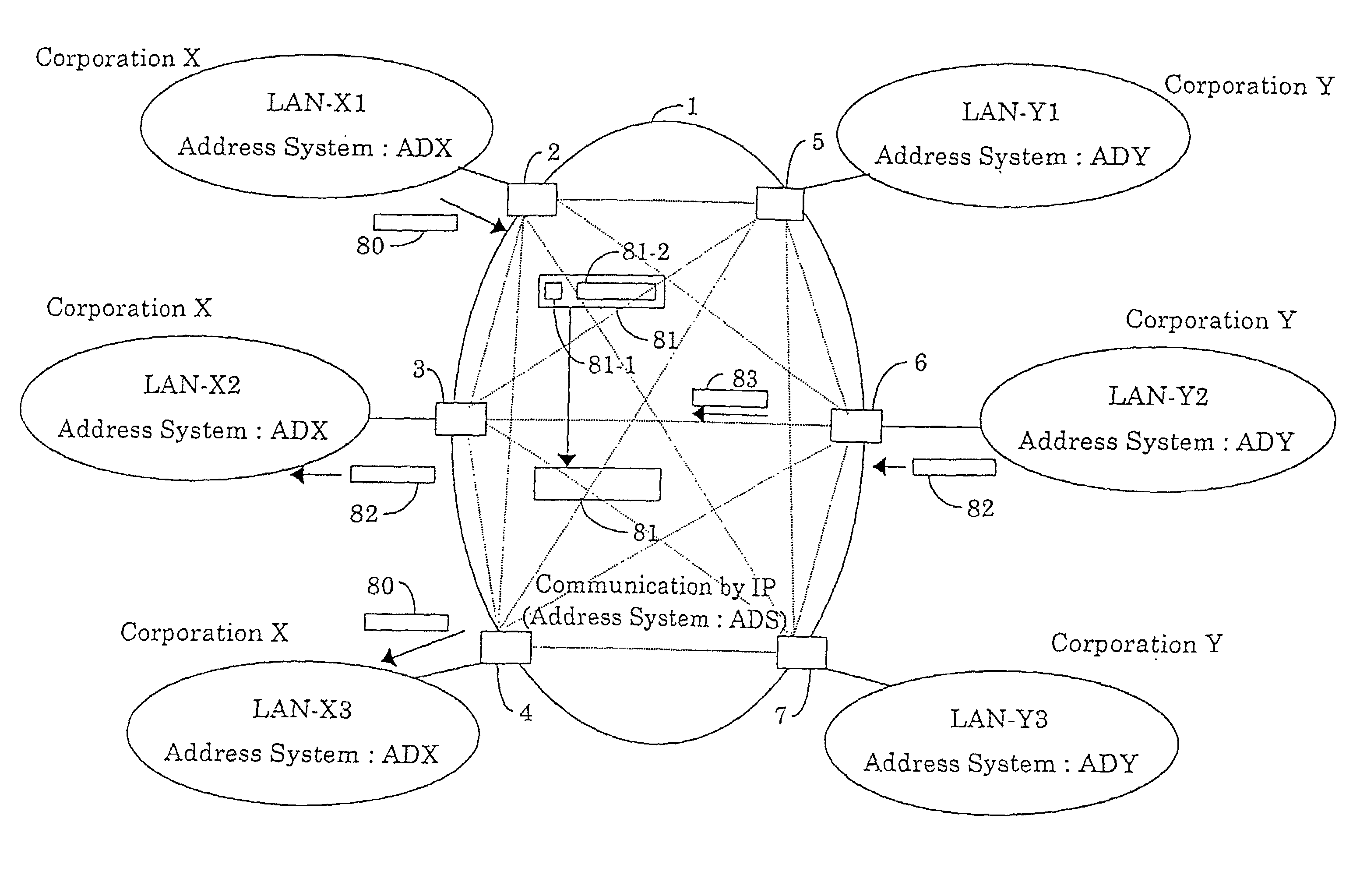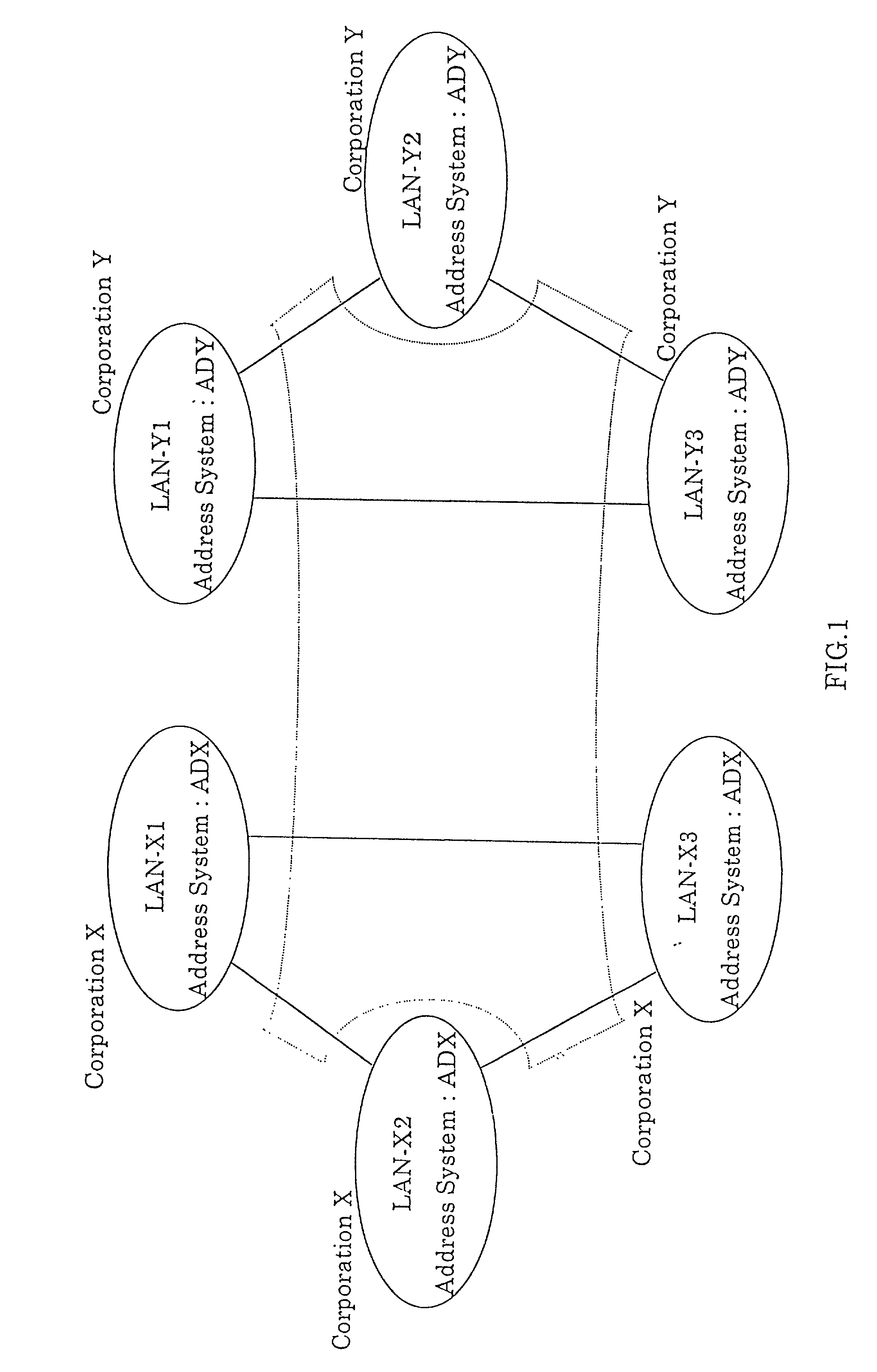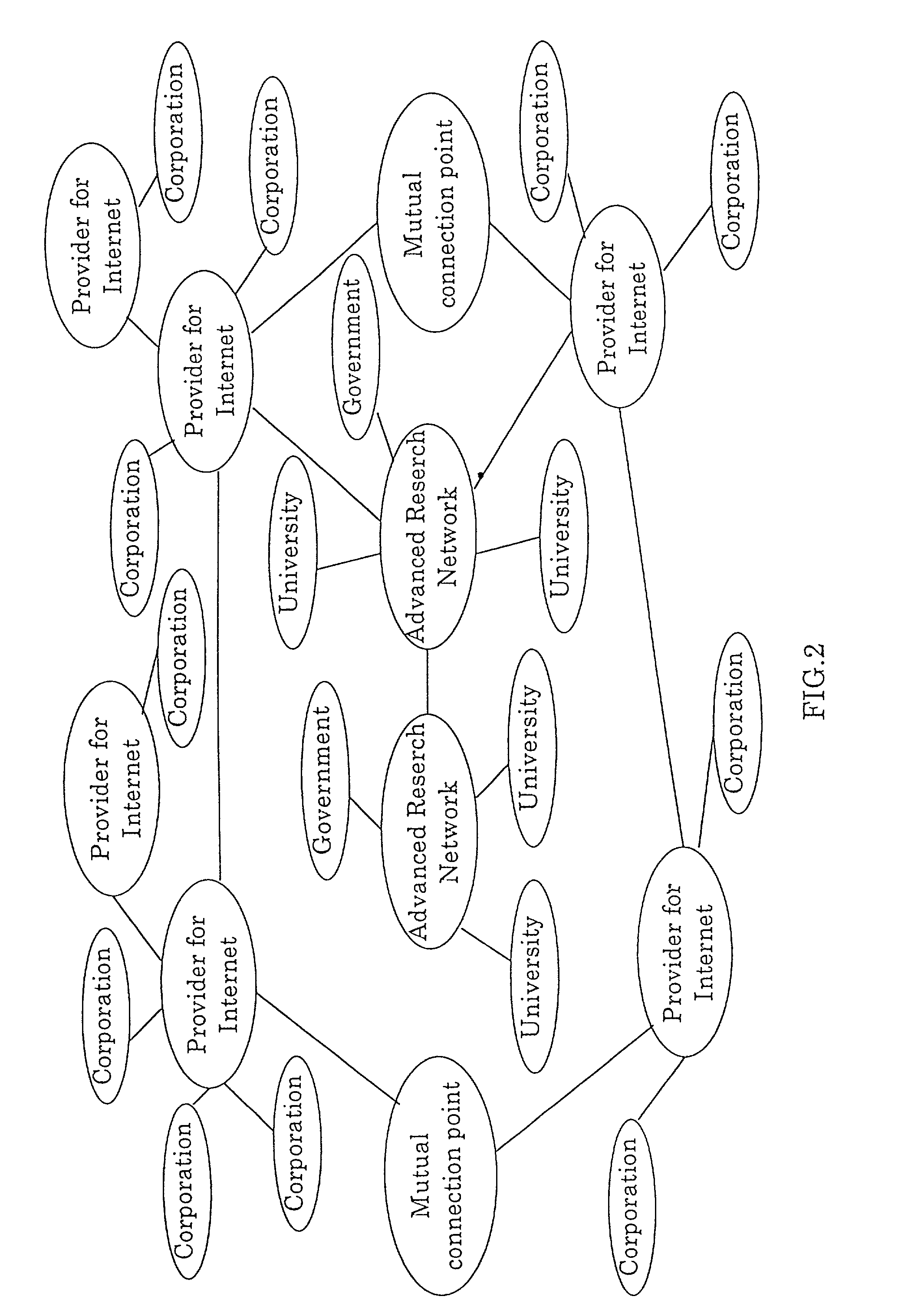Integrated information communication system using internet protocol
- Summary
- Abstract
- Description
- Claims
- Application Information
AI Technical Summary
Benefits of technology
Problems solved by technology
Method used
Image
Examples
embodiment-1
Basic ICS, Intra-Corporation Communication and Inter-Corporation Communication
[0117]A first embodiment of the present invention will be described with reference to FIGS. 14 and 15, regarding a basic communication wherein the transfer destination within the ICS is determined from the receiver ICS user address, based on administration by a conversion table. In the figures, 170-1, 170-2, 170-3 and 170-4 respectively denote gateways provided within the LANs 100-1, 100-2, 100-3 and 100-4, and the ICS frames can pass through these gateways 170-1 through 170-4. FIG. 16 shows an example of a conversion table 113-1 in the access control apparatus 111-1 and FIG. 17 does the same of a temporary conversion table 114-2 in the access control apparatus 110-4.
[0118]First, description will be made regarding communication between a terminal which is connected to a LAN 100-1 of the corporation X which has a unique address system ADX, and a terminal which is connected to a LAN 100-2 of the same corpora...
embodiment-2
Virtual Dedicated Line
[0134]Now, description of the operation of virtual dedicated line connection according to the present invention will be made with reference to FIG. 20. Here, the virtual dedicated line connection refers to communication wherein the ICS user frame is transferred in a fixed manner to a receiving ICS network address already registered in the conversion table, regardless of the ICS user address within the user control field of the ICS user frame, in which the format taken is one-on-one or one-on-N. While the components of FIG. 20 are the same as those of Embodiment-1 shown in FIGS. 14 and 15, what is different is the contents of registration in the conversion table shown in FIG. 21. In the conversion table of the access control apparatus, the receiving ICS network address is determined from the transmitting ICS network address in a fixed manner, so that either the sender ICS user address (intra-corporation), the sender ICS user address (inter-corporation) and the r...
embodiment-3
ICS Network Server
[0140]AS shown in FIG. 23, an ICS network server 330 is comprised of a processing device 331 and an ICS network database 332, the data held by the ICS network database 332 comprising: question item, type, contents of answer, and network addresses of other ICS network servers. The ICS network server 330 analyzes the data portion of the ICS frames received from the access control apparatus 310-1, refers to the ICS network database 332 based on this, obtains answer contents corresponding with the question items (in the event that the identification is “1”), and sends the obtained answer to the access control apparatus 310-1. In the event that the ICS network database 332 does not have answer contents corresponding with the question items (in the event that the identification is “2”), questions another ICS network server and obtains the answer contents corresponding with the question items therefrom, using the ICS network server communication function, based on the ICS...
PUM
 Login to View More
Login to View More Abstract
Description
Claims
Application Information
 Login to View More
Login to View More - R&D
- Intellectual Property
- Life Sciences
- Materials
- Tech Scout
- Unparalleled Data Quality
- Higher Quality Content
- 60% Fewer Hallucinations
Browse by: Latest US Patents, China's latest patents, Technical Efficacy Thesaurus, Application Domain, Technology Topic, Popular Technical Reports.
© 2025 PatSnap. All rights reserved.Legal|Privacy policy|Modern Slavery Act Transparency Statement|Sitemap|About US| Contact US: help@patsnap.com



